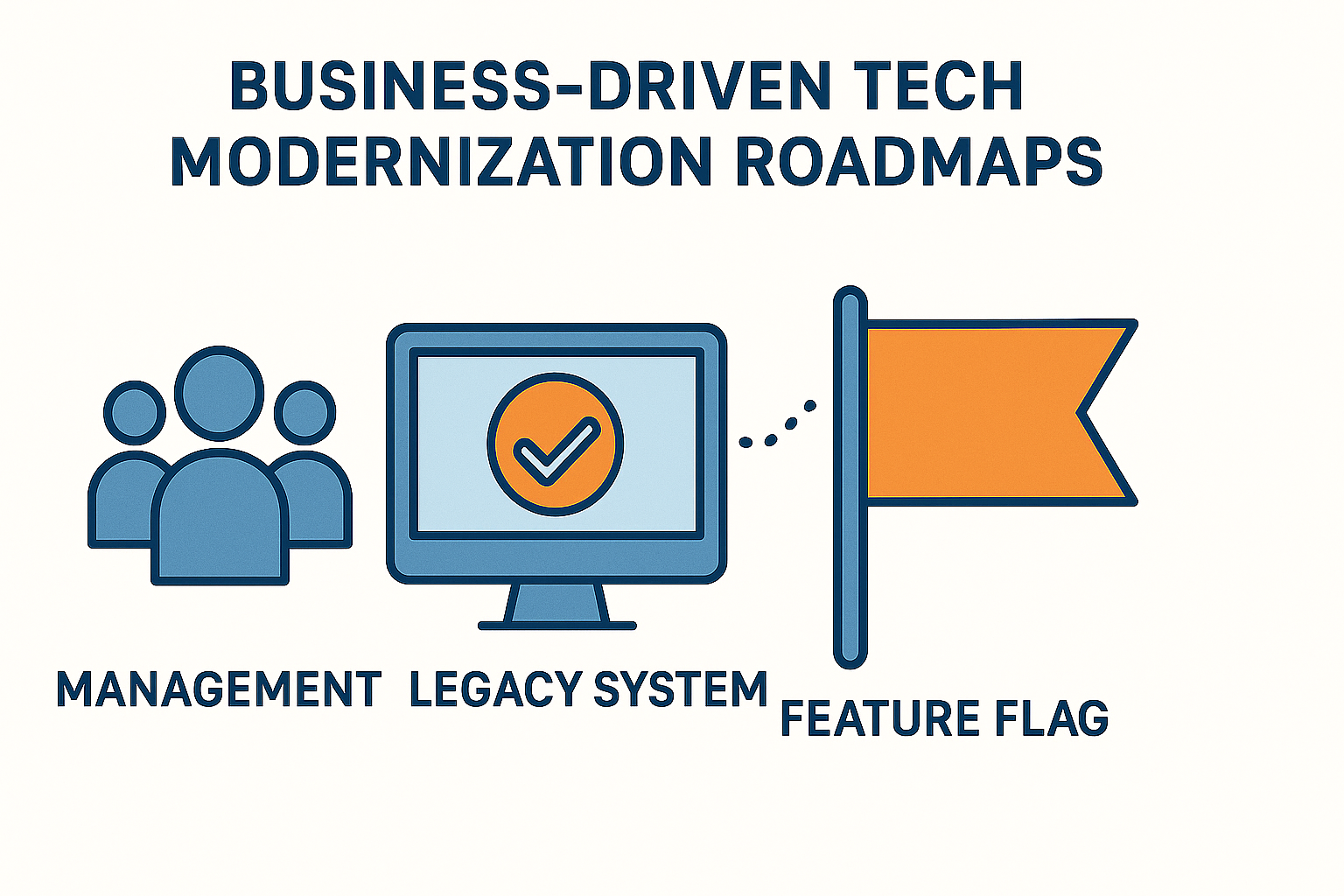Modernization isn’t just updating tech—it’s aligning every upgrade with business outcomes. A business-driven roadmap asks: How does this modernization fuel revenue, agility, or customer experience? If the answer isn’t clear, it’s not a roadmap—it’s a wishlist.
What is Tech Modernization?
Modernization is the process of evolving legacy systems, platforms, and processes to meet current and future business needs. This can mean moving to the cloud, re-architecting apps, decoupling monoliths, or introducing automation—but never in isolation from business goals.
Legacy is not about age—it’s about resistance to change.
The Business-First Lens
Every technical decision must trace back to a business driver:
| Business Goal | Tech Modernization Initiative |
| Reduce time-to-market | Migrate to microservices for faster releases |
| Improve customer satisfaction | Implement modern CRM with real-time data |
| Increase efficiency | Automate repetitive tasks via RPA |
Don’t start with ―We need Kubernetes.‖ Start with ―We need to reduce deployment time.
Building Business-Driven Roadmap
1. Assess Legacy Impact
Which systems block innovation?
What causes downtime, delays, or high costs?
2. Prioritize by Business Value
Tie each tech fix to a measurable outcome (e.g., revenue growth, churn reduction).
Score based on effort vs
3. Sequence for Momentum
Start with quick wins to build
Tackle high-value but high-complexity efforts after cultural buy-
4. Measure and Adapt
Use KPIs aligned with business strategy, not just IT metrics (e.g., lead conversion speed, customer NPS).
Why Most Modernization Fails
Tech-first mindset → Cool tools, no business case.
No cultural shift → Legacy thinking with modern tools = failure.
Big-bang rewrites → Risky, slow, often abandoned.
Siloed execution → No partnership between business and IT.
Conclusion
Modernization isn’t about having the newest stack—it’s about having the right tech in service of the right business goals. A roadmap becomes powerful when it blends the language of CTOs and CEOs—velocity, resilience, impact, and growth.





